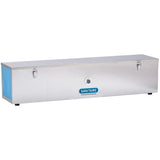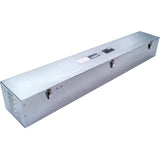How to Evaluate LED vs. HID Horticulture Lighting
Posted by Dave on for ProLampSales

A 2018 study by the Lighting Research Center (LRC) at Rensallear Polytechnic provides detailed guidelines for comparing LED and HID light sources for use in commercial greenhouse and other horticulture facilities. The report is also a cautionary advisory on transitioning to LED based only on the criteria of improved energy efficiency and longer lamp life compared to HID.
Scope of LRC Study
Commercial environmentally-controlled greenhouses in the U.S. account for nearly 900 million square feet of production area.
Indoor horticulture facilities that use electric lighting consist of three types:
- Greenhouses (where electric light supplements daylight)
- Single-layer indoor facilities (electric lighting is the only crop light source)
- indoor vertical farms (electric lighting is the only crop light source)
Electric lighting, whether supplemental or sole source, is used to increase yield, to manage timing of flowering, to shorten time to market and to improve crop quality. In addition, various spectral ranges of light have been used to control plant pathogens and insects.
A grower survey conducted by the LRC revealed that 50% of growers in the U.S. use supplemental lighting for crops. Many of these growers were aware of and expressed interest in LED horticultural lighting systems. A few growers had already installed LED grow lights.
Study Objectives and Testing Metrics
The LRC study sought to develop a framework for evaluating and comparing LED and HID light fixtures designed for horticulture.
Sixteen fixture specific metrics were determined necessary for a comprehensive evaluation.
Some of the metrics in the LRC list specifically addressed lighting performance related to crop growth. Since growers will not replace HID with LED if crop production and quality is compromised, the choice of an LED lighting system must include the expectation that it can at minimum replicate the crop performance under HID lighting.
Photosynthetic Photon Flux (PPF)
A measurement, in micromoles per second, of the Photosynthetic Active Radiation (PAR) produced by the lighting system. PAR is defined as wavelengths between 400 and 700 nanometers critical for plant growth.
Photosynthetic Photon Flux Density (PPFD)
PPFD is the measurement, in micromoles per square meter per second, of the PAR that reaches the surface of the plant. This is a spot measurement of the intensity of the useful light for plant growth. To accurately understand PPFD for the coverage area of each fixture, the average of several spot measurements must be calculated.
Fixture System Application Efficacy
The efficacy of the fixture layout to meet PPFD for the entire area of plantings.
All sixteen metrics are listed in the finished report. See the end of this post to download the entire study.
Thirteen fixtures were tested for each of the sixteen metrics: two high pressure sodium, one metal halide and ten LED horticulture fixtures all from various manufacturers.
The researchers first photometrically tested individual fixtures then used greenhouse simulations to model the fixture layout required to meet minimum PPFD and uniformity criteria.
Summary of Results
- On average about three LED fixtures are required to reach the same PPFD as supplied by one HPS fixture
- LED fixtures produced higher levels of shading in greenhouses due their typically larger size and increased number required compared to HPS. Daylight reduction from LED fixtures ranged from 13 to 55% compared to 5% for HPS. This fact could mean that LED installations will require more electric energy for lighting because of the reduction in daylight compared to HPS.
- Because more LED fixtures were required to deliver the equivalent PPFD, power demand costs increased and this affected the life-cycle costs.
The takeaway from this study suggests that simply using fixture efficacy and light source life - metrics that favor LED compared to HID – may lead to faulty conclusions.
The LRC concluded that some LED products can be a cost-effective alternative to HID horticultural lighting systems, but the analysis requires inclusion of plant growth metrics (such as PPF and PPFD) to ensure the LED system will actually match (or out perform) HID on the critical plant growth factors.
In practical terms, this means knowing the metrics of the existing horticultural lighting system, then purchasing and installing an LED fixture to run through the same tests in your specific application. While this process may take some time and some up-front expenditures, it will allow an accurate side-by-side comparison.
New in 2020: Horticulture Fixture Calculator
In 2020, the LRC made available a calculator to help growers compare grow fixtures based on photosynthetic photon flux (PPFD). The calculator includes the analysis of fixture-specific and application-specific metrics. The calculator results include a comparison with other commercially-available fixtures, the number of fixtures needed to meet the target PPFD, the mounting height that will result in the most efficacious application, the cost of ownership, and the payback period.
View instructions and use the calculator.
Download the full LRC report discussed in this post.
Featured Products (View All)
- 0 Comments
- Posted in HID & Metal Halide, Horticulture, LED
0 Comments




